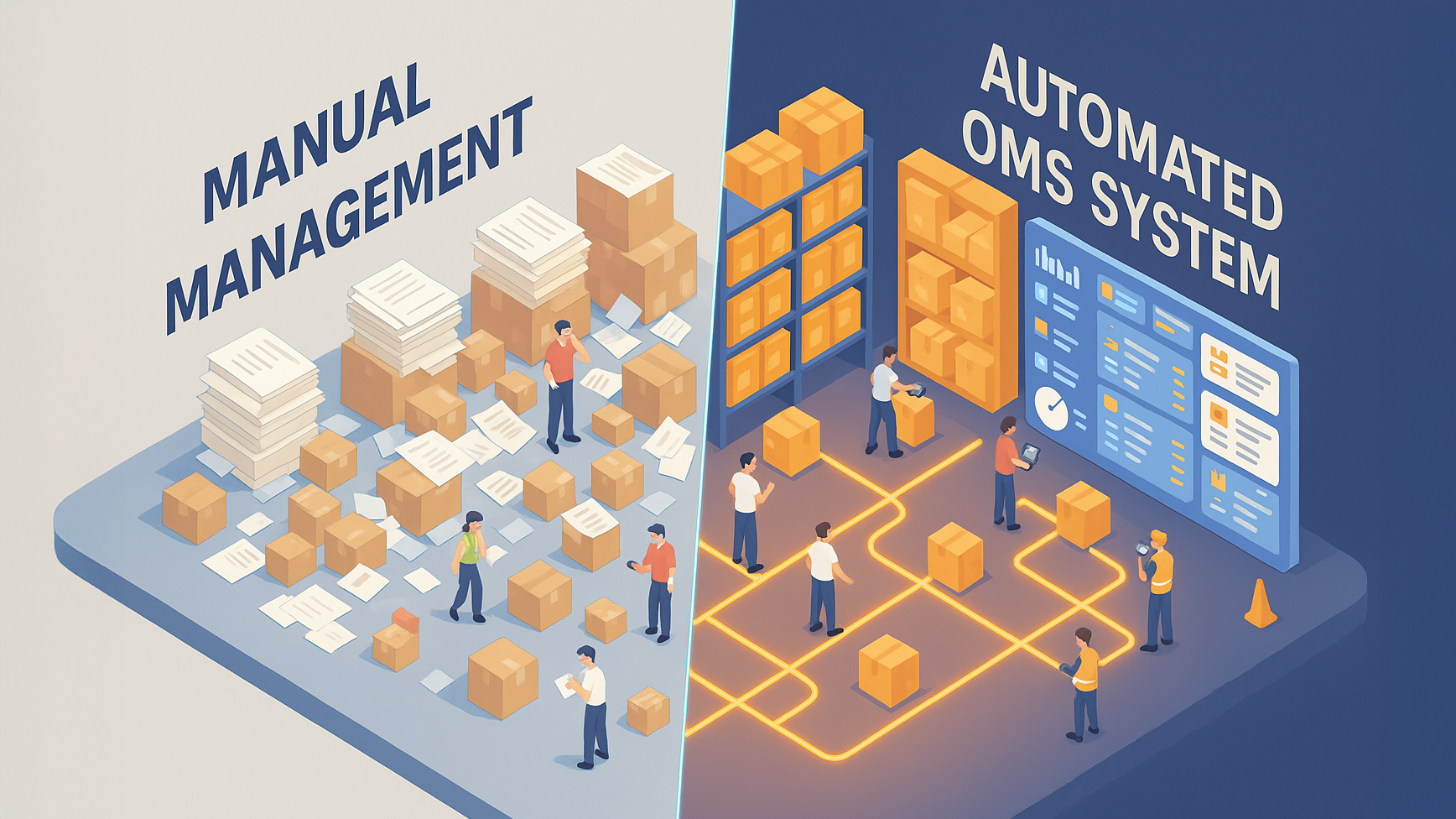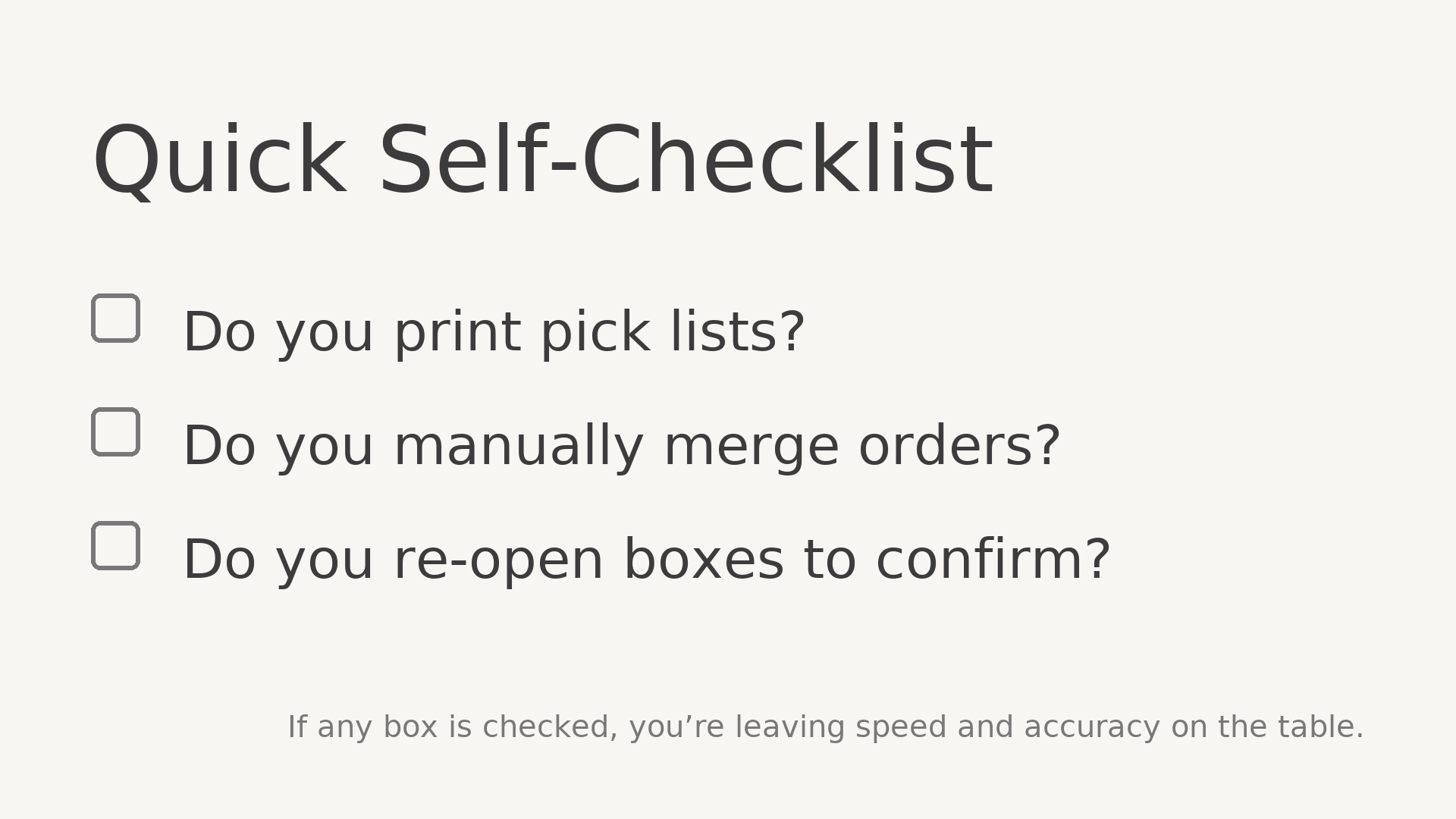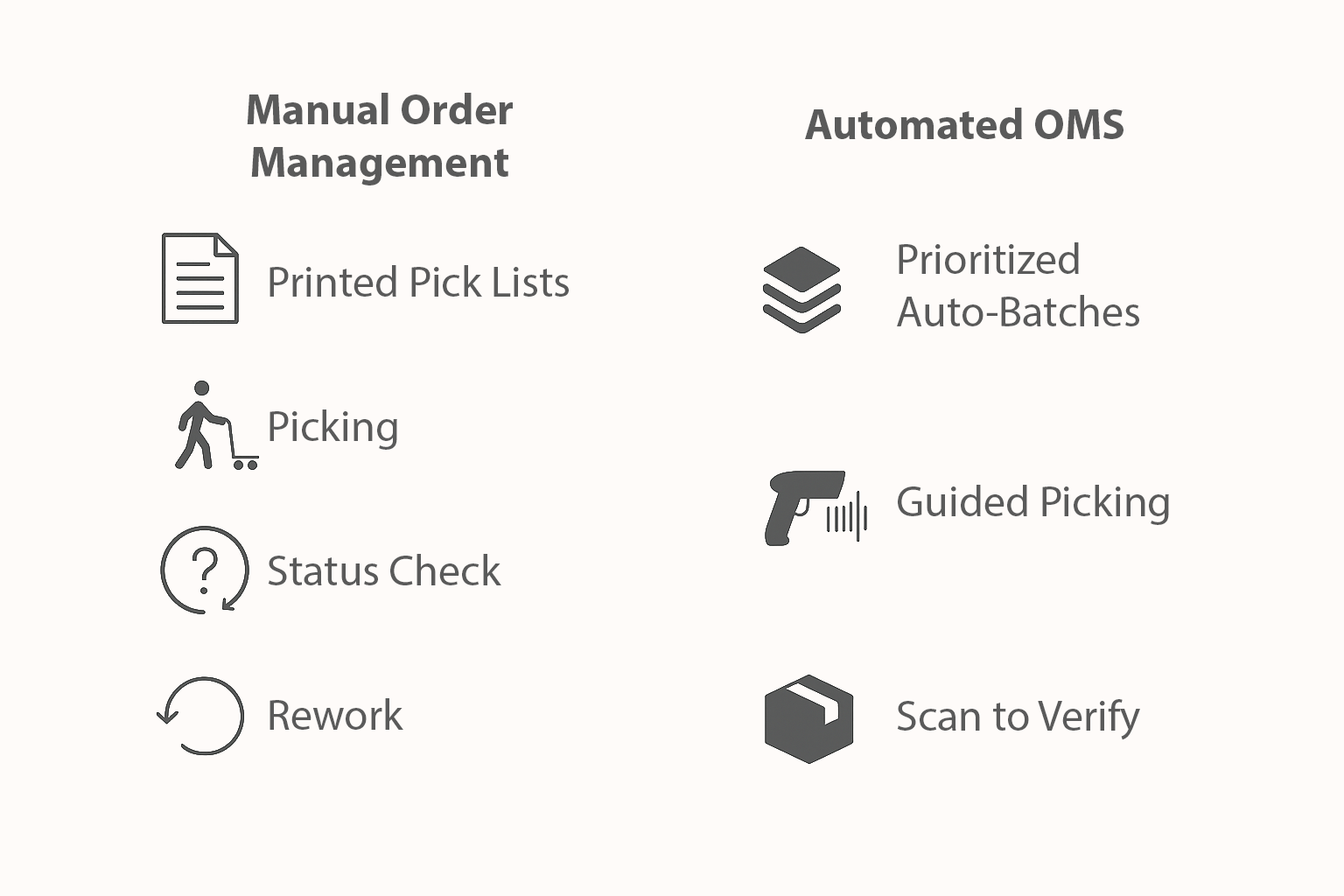Manual Order Management Is Costing More Than You Think



Request A Demo
Take 30 minutes to see how Redo can help you retain more revenue through a more cohesive post-purchase experience for your buyers.
Manual order management looks harmless at low volume. As orders grow, the time spent sorting, re-picking, and chasing status updates becomes a hidden tax on growth. Teams print pick lists, shuffle priorities, and wait for clarifications. Meanwhile, the backlog increases.
Errors ripple downstream. A single mis-pick becomes a reship, a refund, and a “where is my order?” (WISMO) ticket. Support gets noisy, margins shrink, and operators lose time they could use to plan inbound stock or new channels. When statuses and inventory are not in sync, planners buffer "just in case." This slows cash conversion and strains working capital.

Where fulfillment workflows break down (and how to spot it)
Even efficient warehouse operations face bottlenecks as volume and channels grow. The issue is not chaos; it's the slow buildup of small delays across your eCommerce fulfillment workflow.
Manual sorting and batching. If pickers wait for printed queues at shift start, high-priority orders get buried. Inconsistent waves across shifts lead to slower pick starts, uneven station utilization, and missed SLAs.
Syncing errors across tools. When channel and order data do not match bins or inventory, orders hold for clarification. That mismatch leads to oversells, duplicate picks, and split shipments, adding labels and costs you cannot recover.
Low confidence at pack-out. If your team relies on visual spot checks and re-opens boxes “just to be sure,” you are trading speed for uncertain accuracy. Those extra touches drive higher error rates and longer cycle times.

What “automation” should actually deliver (outcomes to aim for)
Order management automation does not replace people. It is about removing guesswork and wait states so your team can go faster with fewer errors. The right system turns tribal knowledge into reliable, rule-based flows.
- Urgent orders, VIP customers, and high-value baskets appear automatically based on rules, not memory.
- Auto-batching, order merging, guided picks, and scan to verify reduce walking, rework, and labels, leading to fewer touches per order.
- Real-time confidence: inventory and order status update in sync, shrinking firefighting and WISMO noise.
How Redo OMS fixes the bottlenecks
Redo OMS focuses on the chokepoints that slow teams down. It integrates rules, workflows, and guardrails to maintain high speed and low shipping errors in DTC and omnichannel operations.
Auto-batching for smarter picking. Redo groups orders automatically by SKU similarity, location, priority, or carrier cutoff. This helps pickers start quickly and walk less. This eliminates manual sorting and inconsistent waves that cause slow pick starts and delayed SLAs. The result is smoother station utilization and earlier pack queues.

Order merging that prevents duplicate work. Redo detects multiple open orders from the same customer and merges them when eligible. That reduces duplicate picks, split shipments, and unnecessary labels. Example: Two orders placed within a short window are combined, picked once, and packed together, saving time at pick and cost at ship.
Scan-to-verify accuracy at pack-out. Redo requires a barcode scan at pack to validate item and quantity before printing the label. This cuts mispicks and rework, boosts packer confidence, and speeds the line because guesswork is gone. It is simple: no scan, no ship.

See Redo OMS in action: auto-batching, merging, and scan-to-verify in a 10‑minute walkthrough.
Proof that speed and accuracy scale with automation
When you take the manual steps out of the workflow, performance moves. Redo OMS customers report material gains in both throughput and quality, without adding headcount.
Why it matters: Faster cycle times help you extend same-day cutoffs and reduce backlog, which improves cash flow. Fewer errors lead to fewer reships and refunds, less WISMO, and a better post-purchase experience that boosts repeat rate. For more ideas on reducing post-purchase friction, see our guides on returns and CX automation.
A simple path to implementation (from manual to automated)
You do not need a big-bang change to realize gains. Start small, prove value at one station, and scale what works across shifts and sites.
- Map your current flow: mark where orders wait, like printing, sorting, exception handling, and pack verification.
- Pilot the highest-friction step first: turn on scan-to-verify at one pack station to cut errors immediately.
- Layer in auto-batching and order merging: begin with clear rules (priority, SKU overlap), then expand as confidence grows.
- Measure and iterate: track cycle time per order and error rate weekly; broaden rollout once trends stabilize.
Metrics to monitor in the first 90 days
Focus on a tight set of KPIs so you can see what automation changes and where to fine-tune. Review weekly with leads and adjust rules as you learn.
- Speed: pick start time, orders per picker-hour, pack station throughput
- Accuracy: mis-pick rate, shipping error rate, reships as a percent of orders
- CX: WISMO/contact rate tied to fulfillment, on-time ship SLA adherence
- Inventory confidence: align open orders with available-to-promise
If you want a head start, ask us for our KPI template to standardize definitions across teams.
Your next move
If you still print pick lists, manually merge orders, or re-open boxes at pack, you pay an invisible tax on speed and CX. The longer you wait, the more those tiny delays compound as volume rises.
Redo OMS uses auto-batching, order merging, and scan-to-verify to automate chokepoints. That combination reduces shipping errors and accelerates throughput, so your team ships more orders with less stress. Start with one station and one rule set, prove the win, then roll it out.
Get a Redo OMS demo and estimate your gains using the 35 percent faster and 97 percent fewer errors benchmarks as a starting point.
Key Insight
Manual order management creates costly wait states and errors that compound with growth. Automate bottlenecks like batching, merging, and scan-to-verify to unlock faster cycle times, fewer mistakes, and a calmer operation.
About Redo
Redo helps ecommerce brands turn post-purchase moments into lasting relationships.
Use AI-powered return flows, exchange-first logic, instant credit, and analytics to understand not just what customers bought, but why they come back.






